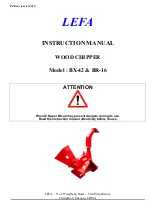
Issue 6.3, January 2020
Page
1
of
4
SAFETY DATA SHEET
HEXID A4 HEAT TRANSFER FLUID
Conforming to Directive 1907/2006/EC
SECTION 1: IDENTIFICATION OF THE SUBSTANCE/MIXTURE AND OF THE COMPANY/UNDERTAKING
1.1.
Product Name
Hexid A4
1.2.
Supplier
Applied Thermal Control Limited
39 Hayhill Industrial Estate, Barrow upon Soar,
Leicestershire, LE12 8LD. United Kingdom.
www.app-therm.com
1.3.
Telephone Number
+44(0)1530 839998
1.4.
1.5.
Emergency Telephone Number
+44(0)1530 839998
1.6.
Intended/Recommended Use
Heat Transfer Fluid
SECTION 2: HAZARDS IDENTIFICATION
2.1.
Classification of the substance or mixture
The product is not classified as dangerous according to Regulation (EC) No. 1272/2008.
This mixture is not classified as dangerous according to Directive 1999/45/EC.
SECTION 3: COMPOSITION/INFORMATION ON INGREDIENTS
3.1.
Chemical Nature
Water (CAS 7732-18-5), not classified.
Propylene glycol (CAS 57-55-6) (REACH 01-2119456809-23)
(EINECS 200-338-0) not classified.
Fluorescein (trace) and biocide (trace) not classified.
3.2.
Food Grade
SECTION 4: FIRST AID MEASURES
General advise
No special precautions required. Treat symptomatically.
4.1
.
Eye Contact
Rinse thoroughly with plenty of water, also under the eyelids. Remove contact lenses
after a few minutes and continue rinsing. If symptoms persist, call a physician.
4.2.
Skin Contact
Wash off immediately with plenty of water. If skin irritation persists, call a physician.
4.3.
Inhalation
Remove to fresh air. If symptoms persist, call a physician.
4.4.
Ingestion
Rinse mouth with water. Never give anything by mouth to an unconscious person. If
symptoms persist, call a physician.
SECTION 5: FIREFIGHTING MEASURES
5.1.
Extinguishing media
Use extinguishing measures that are appropriate to local circumstances and the surrounding environment.
Water spray, foam, dry powder or CO2. Alcohol-resistant foam
5.2
Unsuitable extinguishing Media
High volume water jet. Do not use a solid water stream as it may scatter and spread fire.
5.3
Specific hazards during firefighting
In fire conditions, toxic decomposition products may be formed (see also section 10). In combustion, emits
fumes, smoke, carbon dioxide (CO2) and carbon monoxide (CO). Heating will cause a pressure rise - with
severe risk of bursting and explosion, Violent steam generation or eruption may occur upon application of
direct water to hot liquids.
5.4. Advice for firefighters
In the event of fire, wear self-contained breathing apparatus. Wear personal protective equipment. Promptly
isolate the scene by removing all persons from the vicinity of the incident if there is a fire. Keep containers
cool by spraying with water if exposed to fire. Collect contaminated fire extinguishing water separately. This
must not be discharged into drains. Burning fluids may be extinguished by dilution with water
Annex R-3 200203 SDS Hexid A4 v6.3
44




































